Creating an undersea mural, conserving flamingos
Small photos of a vintage, 8-by-10-foot painting of the ocean floor are taped to Sean Murtha’s easel. He glances at the photos, dips his brush onto his palette and applies paint to a stand of tall sea grass. He is creating a new version of the faded, original 1924 painting — lying nearby on the marble floor of the Hall of Fishes on the first floor of the Suffolk County Vanderbilt Museum’s Marine Museum in Centerport.
Just steps away from Murtha, Thomas Doncourt, a foreground artist, lies inside a small exhibition case on a slender platform he built. The device allows him to work in the diorama that contains a group of preserved tropical shore birds without damaging the surrounding foliage and other objects. Using steel mesh, plaster, sand and paint, he is reconstructing a section of beach that, after nearly a century, has crumbled, leaving a hole in the scene.
These two accomplished artists, along with Stephanie Gress, the Vanderbilt’s director of curatorial affairs, and her staff, are engaged in the Marine Collections Conservation Project.
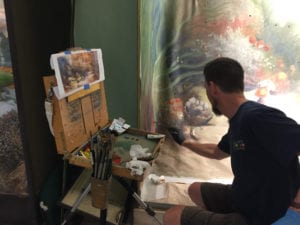
Funded by a $135,000 grant from The Robert David Lion Gardiner Foundation, the project has been underway for two years. The latest phase of work began last winter, when five flamingos and a dozen fish from the Marine Museum spent the winter in New Jersey at the studio of taxidermist George Dante. Dante and his colleagues at Wildlife Preservations cleaned decades of dust from the specimens, touched up fins and feathers, and returned them recently to their home at the Vanderbilt.
During the spring and summer, Murtha and Doncourt completed weeks of crucial repair and restoration on the background paintings and vegetation in the exhibition and diorama cases where the creatures live.
In the flamingo diorama, Doncourt repaired and repainted the birds’ pedestal-shaped mud nests after Murtha had finished the cleaning and spot restoration of the curved background painting that depicts the birds’ homes in inlets along the coast of Cuba.
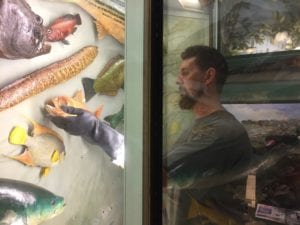
The painting was created in the early 1920s by William Belanske. Later, William K. Vanderbilt II hired Belanske, who had been working for the American Museum of Natural History (AMNH), to be his artist on the 1931-1932 global ocean journey of his ship, the Alva. Belanske later became the resident artist and first curator of the Vanderbilt Museum.
Murtha, Doncourt and Dante, like Belanske, are former members of the American Museum of Natural History staff, and the latest generation of the century-long Vanderbilt-AMNH collaboration. Over the past few years, the three also completed extensive work on the wild-animal dioramas in the museum’s Stoll Wing, funded by significant grants from the Roy M. Speer Foundation. That tradition began with Belanske in the early 1920s and continued with the artists and scientists Vanderbilt hired in the late 1920s to create his nine-diorama Habitat Room that depicts animal life from several continents. The centerpiece of the room is a 32-foot whale shark, the world’s largest taxidermied fish, caught off Fire Island in 1935.
The tradition resumed in the late 20th century, when AMNH artists were hired to restore the deteriorating habitat, which had been closed from 1996 to 2009. The project was made possible by a federal Save America’s Treasures grant, through the National Parks Service.

Murtha restored the flamingo diorama painting by carefully painting over the numerous water streaks. “The case is located on a wall of the building,” he said. “The painting was created on the surface of the plaster wall itself. The heat and outside moisture leached through the wall from the outside, then through the surface of the painting, which caused streaking over the decades.”
Murtha’s work makes the nearly century-old painting look bright and vibrant. “Now, with the streaks covered, there is no distraction from the birds and the marsh,” he said. “Plus, the flamingos, which are now re-installed, cover most of the streaks I was unable to paint over.”
Murtha also created a new version of the 8-by-10-foot, 1924 canvas background painting in the exhibit case titled “Fish from the Atlantic Ocean, the Madeira Islands and Bermuda.” The case contains about six dozen fish and nearly three dozen examples of coral lying on the sand of the “ocean floor” at the bottom of the case. The fish and coral were removed temporarily for cleaning and repairs, and their locations marked on the new canvas before Murtha began painting.
Doncourt also restored tropical foliage and rebuilt the crumbling beach in the diorama “Shore Group — Man O’War Birds and Pelicans (Lesser Sandpipers).” “The beach was originally created by placing a layer of sand over nongalvanized steel screen, which has rusted over the years and crumbled,” Doncourt said. “I rebuilt it with galvanized steel lath, which won’t rust.”
After removing the sand and other nearby materials, he cut heavier galvanized mesh to repair the hole. “I covered the mesh with a plaster bandage, painted it a base color, and then covered it with the sand and other foreground materials,” he said.
When the birds were back in place, Doncourt repaired the foreground and repainted it in two tones. “I went in with a brush on a long stick to add a third, darker color,” he said. “I have an extendable ‘claw’ like grandma used to get cans off a high shelf, and used it to place dried leaves and twigs on the ground around the birds.”
Another expert who worked to conserve the flamingos was Marco Antonio Olcha, a skilled taxidermist and conservator from Cuba and a consultant to Dante. Olcha, who works for the National Center for Conservation, Restoration and Museology in Havana, said he gently vacuumed the flamingo feathers to remove decades of dust.
“I also used a brush, and finally a special conservator’s paper, moistened with a water-based soap solution, to complete the gentle process of cleaning the feathers,” Olcha said. “Then I repainted the flamingos’ beaks, legs, and feet.”
The earlier phases of the Marine Collections Conservation Project involved extensive conservation and preservation work by Vanderbilt curators on nearly 1,500 of the museum’s fluid-preserved ocean specimens.
The Suffolk County Vanderbilt Museum is located at 180 Little Neck Road, Centerport. Through Sept. 3, the museum will be open Tuesdays through Saturdays from 11 a.m. to 5 p.m. and Sundays from noon to 5 p.m. The Marine Museum is currently closed for further renovations but the Habitat Room and all other exhibits are open. For more information, call 631-854-5579 or visit www.vanderbiltmuseum.org.
All photos courtesy of Vanderbilt Museum

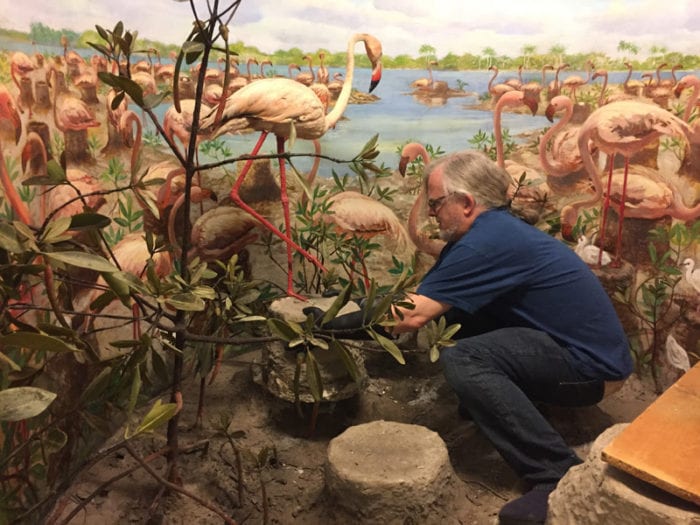




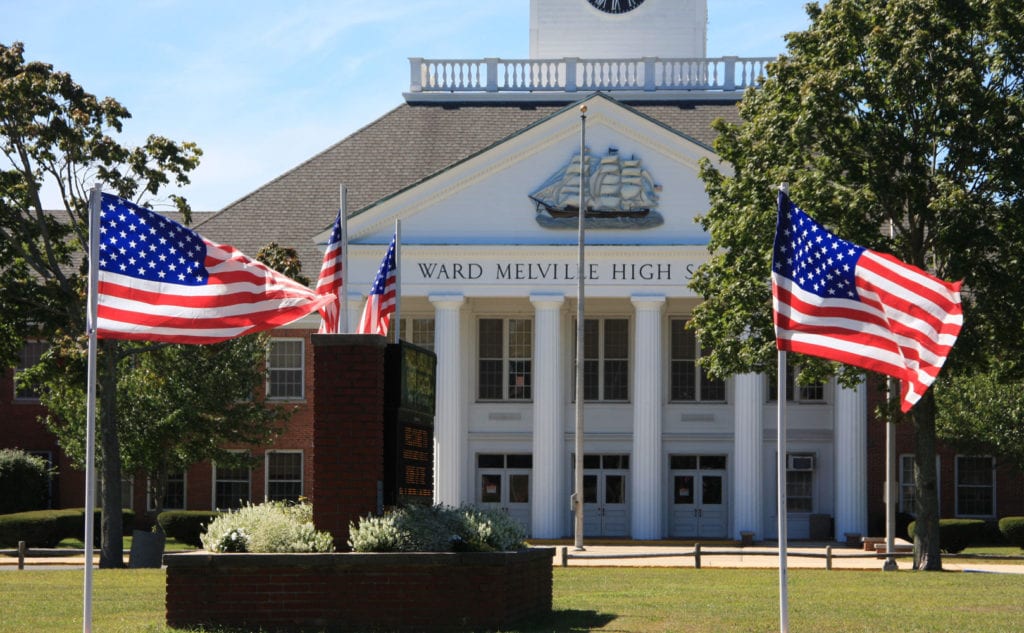


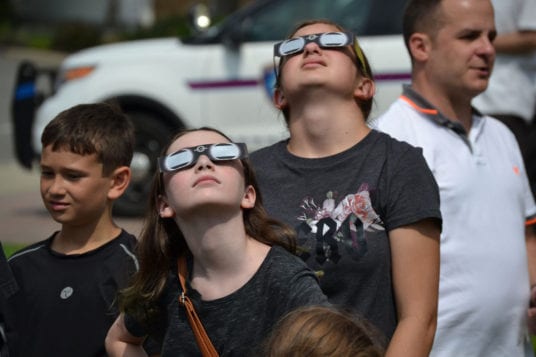



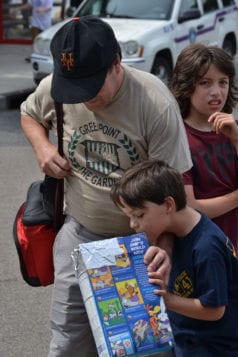


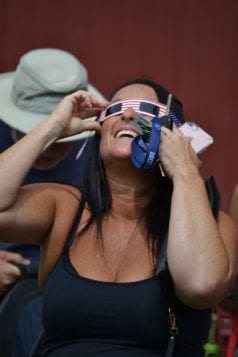


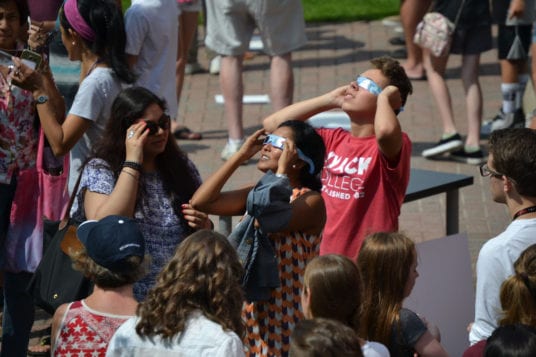
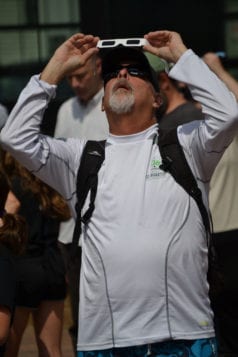




 Marijuana has now become much more of a mainstay in the United States. Starting in 1937 marijuana was illegal throughout the United States. This lasted until the Compassionate Use Act was passed in California in 1996. There are now eight states (and the District of Columbia) that legally allow the use of recreational marijuana and 20 states that allow the use of medical marijuana.
Marijuana has now become much more of a mainstay in the United States. Starting in 1937 marijuana was illegal throughout the United States. This lasted until the Compassionate Use Act was passed in California in 1996. There are now eight states (and the District of Columbia) that legally allow the use of recreational marijuana and 20 states that allow the use of medical marijuana.






